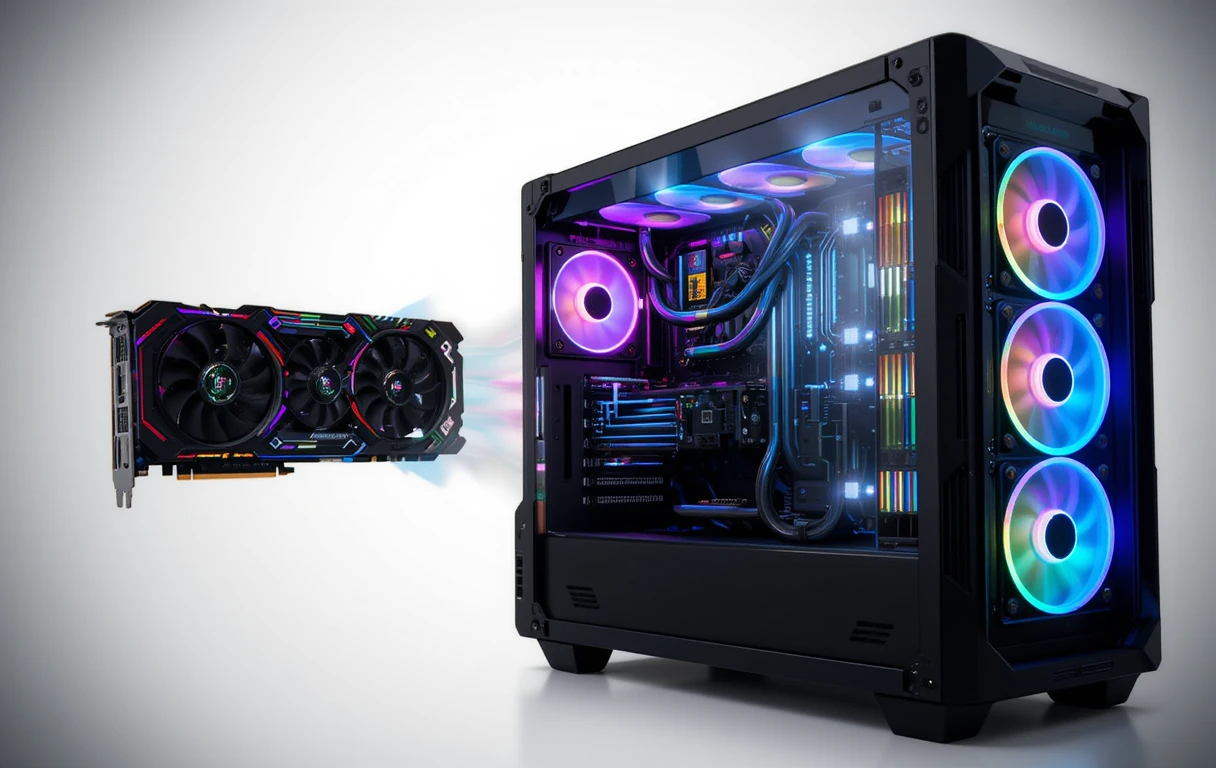If you’re a passionate gamer, you’ve likely dreamed of owning the ultimate gaming rig that not only runs games smoothly but also delivers stunning graphics and unbeatable performance. The good news? Building your dream gaming PC isn’t as complicated as it might seem. With the right knowledge about essential PC hardware for gamers, you can assemble a rig that meets your specific gaming needs and fits your budget. Let’s dive into the world of PC hardware and explore how to create a gaming setup that will make every frame count.
Introduction: Why Building Your Own Gaming Rig Is Worth It
Building your own gaming PC is not just a technical endeavor—it’s a creative process that allows you to customize your setup for optimal performance, aesthetics, and personal satisfaction. Unlike prebuilt PCs, custom rigs give you control over every component, so you can prioritize the hardware that matters most for your gaming style. Plus, it’s often more cost-effective, allowing you to allocate your budget where it counts—like a high-performance graphics card or a better cooling system. Whether you’re into immersive RPGs, fast-paced shooters, or competitive eSports, having the right PC hardware makes all the difference.
The Core Components of a Gaming Rig
To build the ultimate gaming machine, you need to start with the basics. Here are the core hardware components every gamer should consider when designing their rig:
1. Central Processing Unit (CPU): The Brain of Your PC
The CPU is the heart of your gaming rig, and its performance directly affects your gaming experience. Gamers should look for CPUs with high clock speeds and multiple cores. For example:
- Intel Core i5/i7/i9: Ideal for high-performance gaming.
- AMD Ryzen 5/7/9: Known for excellent multi-core performance and affordability.
Tip: If you’re playing CPU-intensive games like simulation or strategy games, invest in a processor with more cores and threads.
2. Graphics Processing Unit (GPU): The Gaming Powerhouse
For gamers, the GPU is arguably the most critical piece of hardware. It’s responsible for rendering those jaw-dropping visuals that make modern games so immersive. When choosing a GPU, consider:
- NVIDIA GeForce RTX 30/40 Series: Perfect for ray tracing and high-resolution gaming.
- AMD Radeon RX 6000/7000 Series: Offers competitive performance at lower prices.
Pro Tip: Match your GPU to your monitor’s resolution and refresh rate. For example, a 1080p 144Hz monitor pairs well with a mid-range GPU, while a 4K 120Hz display demands a high-end card.
3. RAM (Random Access Memory): Smooth Gaming Performance
RAM ensures your games run without lag or stuttering by providing quick access to data. Most modern games require at least 16GB of RAM for optimal performance, but 32GB is a safer choice for future-proofing. Look for:
- DDR4 RAM with speeds of 3200MHz or higher.
- Low-latency RAM for faster data transfer.
4. Storage: SSD vs. HDD for Gamers
Gone are the days when HDDs were the norm. For faster load times and improved overall system performance, gamers should prioritize SSDs:
- NVMe SSDs: Ultra-fast storage that significantly reduces game loading times.
- SATA SSDs: More affordable and still faster than traditional HDDs.
A combination of a smaller SSD for your operating system and frequently played games, plus a larger HDD for storage, works well for most setups.
5. Motherboard: The Backbone of Your Rig
The motherboard connects all your components, so compatibility is key. Choose a motherboard that supports your CPU and GPU and provides room for upgrades. Features to look for include:
- PCIe 4.0 or 5.0 support for GPUs and SSDs.
- Enough RAM slots to accommodate future upgrades.
- Built-in Wi-Fi and USB-C ports for convenience.
6. Power Supply Unit (PSU): Fueling Your Gaming Rig
A reliable PSU is essential to ensure your gaming rig runs smoothly without power interruptions. Choose a PSU with:
- A wattage rating that exceeds your rig’s power requirements.
- An 80 PLUS Gold or Platinum certification for efficiency.
Quick Tip: Use a PSU calculator to determine the exact wattage needed for your components.
7. Cooling Systems: Keeping Your Rig Cool Under Pressure
Gaming can push your hardware to its limits, generating heat that needs to be managed effectively. There are two main cooling options:
- Air Cooling: Affordable and efficient for most builds.
- Liquid Cooling: Ideal for high-performance rigs or overclocked CPUs.
8. PC Case: The Final Touch
Your PC case isn’t just about looks—it also impacts airflow and component compatibility. Choose a case that:
- Has ample room for your GPU, cooling systems, and storage.
- Supports good cable management for a cleaner build.
- Matches your aesthetic preferences with RGB lighting or sleek designs.
Assembling Your Dream Gaming Rig
Once you’ve selected all your components, it’s time to put them together. Here’s a step-by-step guide:
- Install your CPU and RAM onto the motherboard.
- Mount the motherboard into the case.
- Connect the power supply and storage drives.
- Install your GPU in the PCIe slot.
- Connect all cables and secure them neatly.
- Run a test boot before sealing the case.
Building your rig can be a rewarding experience, but don’t hesitate to seek help from online guides or forums if you encounter challenges.
Maintaining Your Gaming PC
To keep your gaming rig running at peak performance, regular maintenance is essential. Here’s what you should do:
- Clean dust from fans and filters every few months.
- Update your drivers and BIOS to ensure compatibility with the latest games.
- Monitor temperatures using software tools like MSI Afterburner.
Conclusion
Building your dream gaming rig is an exciting journey that allows you to create a setup tailored to your gaming preferences. By investing in the right PC hardware, you can enjoy smooth gameplay, stunning visuals, and the satisfaction of a custom-built machine. So, what are you waiting for? Start planning your ultimate gaming rig today, and take your gaming experience to the next level!




